Anyone who doesn’t have a small/compact SUV on the market now must be wishing they did. Where the other SUV sectors are more or less static in terms of growth, there’s upside potential for the baby SUVs, and it’s coming at the expense of small cars.
Now accounting for 11 per cent of new passenger sales, newcomers abound. Toyota recently unleashed its wild looking C-HR, a model name that seems almost Honda-like, (a mix of CR-V and HR-V). The letters evidently are descriptive, standing for Coupe-High Rider. It sports a small turbocharged engine, something we haven’t seen a lot of from Toyota. C-HR is available in just one specification, but can be had with a 2WD or 4WD powertrain.
Subaru also just launched its second-generation XV, an offering that’s amongst the biggest in the small SUV class, yet is hardly the most expensive; despite being a new model with increased safety specification, pricing has come back by around $3000 for the Sport model (seen here). Oh, and it’s 4WD too. Since the XV and C-HR arrived at the same time and cost much the same, we organised a drive off, and included a CX-3 for completion, given it has just undergone a facelift. As XV kicks off at $34,990, the $37,990 2WD C-HR seemed the most appropriate rival, and while we’d like to have had a $35,295 GSX 2WD CX-3 for comparison purposes, that wasn’t possible. So we must pretend that the Limited front driver we plied was one of those.
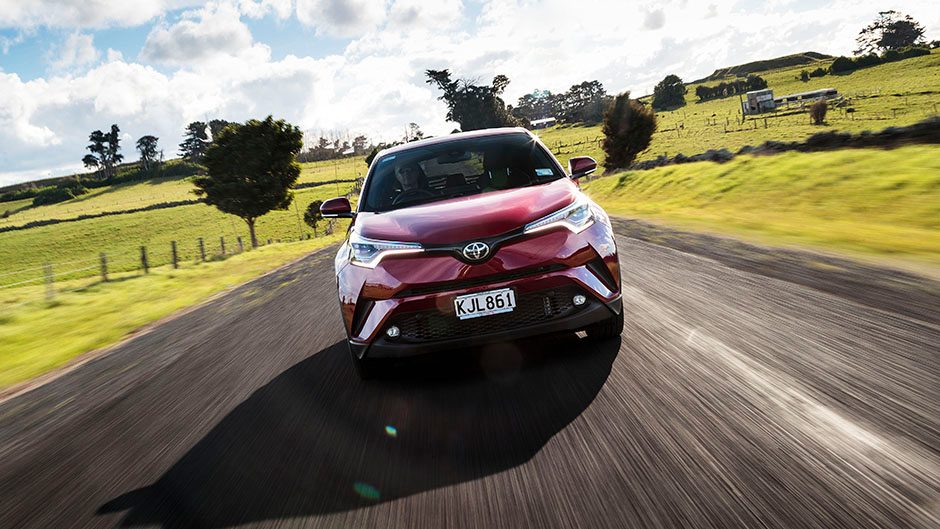
What’s on offer?
Safety specification continues to take precedence, and one of the new trends is the adoption of active cruise as standard in less expensive vehicles. The XV and C-HR both gets this useful device, but not CX-3, at least not in GSX guise. Arguably an even more important safety feature for New Zealand conditions is permanent 4WD, and only one of these, the XV, comes standard with this feature. It costs $2000 extra in the CX-3 and C-HR. The XV and C-HR also come with seven airbags, the Mazda with six. AEB is common to the trio, but lane departure warning the CX-3 misses out on. However, it picks up BSM, missing in the Subaru, as is RCTA, common to the other pair. All three are five-star ANCAP rated.
Smart key and pushbutton start are filtering down to cheaper vehicles, but someone forgot to tell Toyota. The others get these, and dual zone air is present in all but the CX-3. The Mazda counters (along with the XV) in having idle stop, missing in C-HR. Reversing cameras and rear parking sensors are common to all, as is satellite navigation but none gets leather trim. Different driving modes are found on the Mazda (Sport/Normal) and C-HR (Sport/Normal/Eco) while it’s just all go for the Subaru.
Items peculiar to the XV include X mode off-road function (optimises electronics for ‘vertiginous’ terrain) and CVT with paddle shifters, while the CX-3 is the only one with an automatic transmission, a six-speeder with MS gate. C-HR also gets a CVT but without paddles.
The Mazda alone has a mouse controller for sorting minor functions. CH-R is the lone contender with LED headlamps and automatic high beam headlights, along with front parking sensors, and a G force monitor. But it has a tiny central monitor compared with the other two.
Pricing is a win to the XV. It’s the least expensive, and is also the only one with 4WD. But the CX-3 comes with free servicing for the first three years, and it alone has a five-year unlimited kilometre warranty. Subaru offers three-years, unlimited kays, and Toyota is similar except for a 100,000km limit.
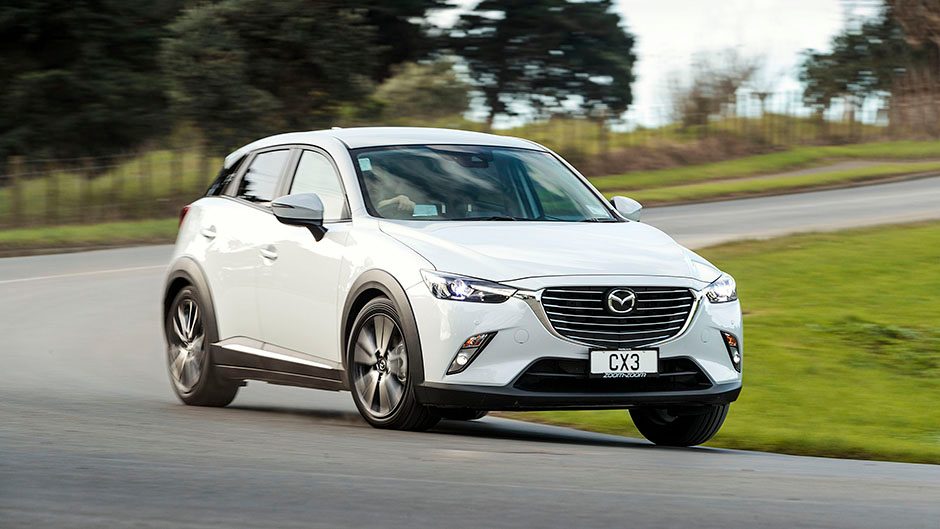
Designed to please
The XV and C-HR are both all-new, the CX-3 recently facelifted. C-HR is youth oriented, and was destined to be another Scion, until that US subbrand was axed. The shape is said to be Euro-influenced, coupe-like, the “diamond architecture” providing a mix of sharp lines and smooth curves. Concealed rear door handles, streamlined A-pillars and crazy character lines all add up to different. Almost as radical for Toyota is the adoption of downsizing and turbocharging, its 1.2-litre direct-injection vvt engine producing 85kW of peak power, and 185Nm from 1500 to 4000rpm. Power flows to the fronts via a CVT with seven steps and manual operation at the shift lever. It’s the only one of this group that requires 95ULP.
The interior is not quite the novel styling adventure the exterior is, and with dark hues it’s almost gloomy in the rear, though isn’t as tight as the CX-3 which really isn’t that adult friendly. The XV takes the back seat space prize.
C-HR has the softest seat cushions though, and the driver’s seat therefore feels quite encompassing. Perhaps the oddest aspect of the C-HR layout is its drive mode selector, ‘Sport’ buried in a submenu. Each time you kill the ignition, it reverts back to Normal.
Underpinning the C-HR is Toyota’s new global architecture chassis that evidently offers a lower centre of gravity and better weight distribution.
CX-3 is a known entity and wears its Kodo clothing well. Like XV, it uses a 2.0L direct injection naturally aspirated engine, creating 109kW/192Nm. Only this one is an upright IL4 rather than a flat four. Midlife enhancements include the adoption of G-Vectoring Control for smoother cornering, and added sound deadening for greater refinement. There’s also a new wheel design, powered folding mirrors, fresh instruments, and better resolution touch screen.
The second-generation XV strongly resembles its forebear but the visual changes are sufficient to distinguish them. Under the skin is Subaru’s new toughened lightweight chassis which debuted in Impreza, and this vehicle is the only one to feature torque vectoring by brake. The engine gets a new lease on life with direct fuel injection, pumping out 115kW of power and 196Nm of torque. A CVT with paddle shifters helps get the most out of it. At 4465mm long and 1800mm wide, XV is slightly bigger than C-HR (4360 and 1795), and CX-3 (4275/1765)
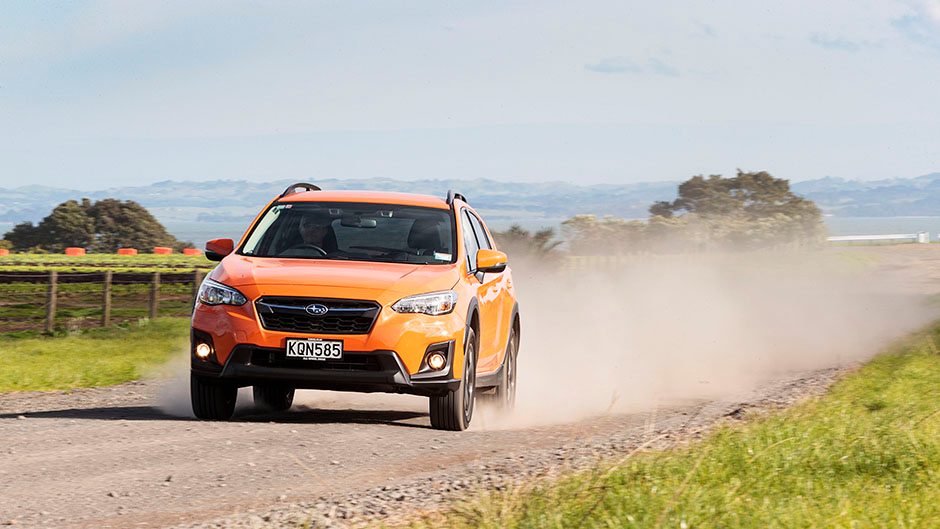
How’d they go?
CVTs may be brilliant devices to some people but there’s little wrong with the six-speed auto of the CX-3. And the Mazda offers the best overall performance too, helped by being 150kg lighter than the others. CX-3 is the only one of this trio to achieve a 0-100 acceleration time in the eights whereas the others struggled to break 10sec, and the C-HR simply wouldn’t (11.5sec). The SkyActiv 2.0 engine produces peak torque at a low 2800rpm (for an atmo engine) so will trundle through town in top gear, and out of town feels buzzy from 2500-5000rpm. As it ran in, short shifting became the order of the day. Most of the time fuel use was in single figures.
However, the new XV mill is decent too, a big improvement, our best 0-100 performance figure of 9.8sec two seconds better than the original XV. Driving it home from Napier, we seldom resorted to the paddles; adding throttle proved sufficient. Fuel use peaked at 10L/100km, settling back in the 7s to 9s later. Tall ‘gearing’ (it’s a CVT) helps make this a quiet runner on the open road, similar to the CX-3. Extra rubber on the C-HR makes it slightly noisier. None you’d rate as rowdy.
So what about Toyota’s newcomer? On a power-to-weight basis, it’s the worst off here, which explains why it is also the slowest. That said, in its Normal mode it slopes around the suburbs well enough, and once you select Sport mode in the submenu, it peps up for out of town work. But up against the extremely well sorted 2.0L direct injection units the baby turbo mill does struggle. On the upside, the engine is remarkably quiet, and fuel use never exceeded 10L/100km, but then it seldom did with the others either.
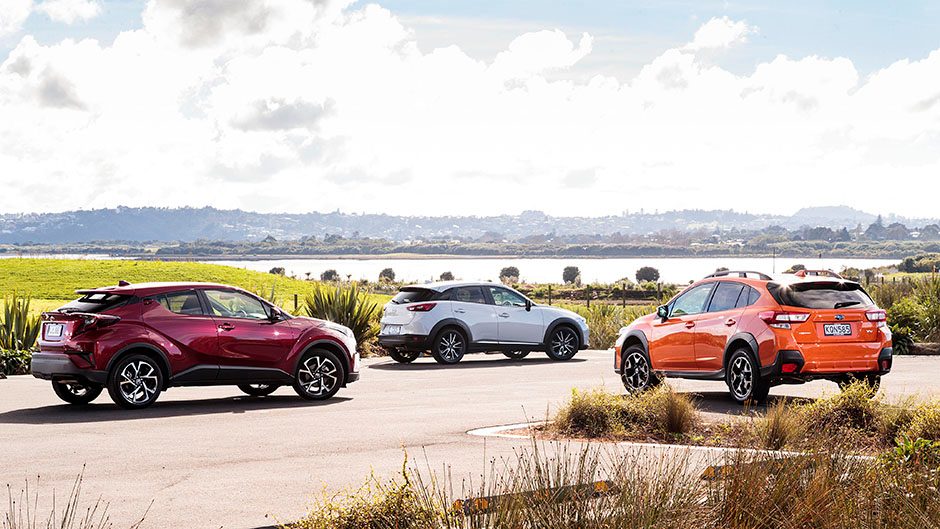
Behind the wheel
For the best mix of ride and handling it’s the XV, though the CX-3 runs it close, just not in the wet. The Mazda feels light on its feet and with recalibrated electric steering it turns keenly, and comes back on line willingly with a brief throttle lift. The front end feels a touch soft so heading into turns with a bit of brake applied locks it online nicely.
It’s a bit bigger, heavier and taller but with permanent 4WD and torque vectoring the XV is every bit as adept as the CX-3 through corners, and then shows it the way with long travel suspension that provides better ride quality. The XV also has a nice sorted chassis feel about it; nothing seems to ruffle it much. These two both have electric steering that’s amongst the best in the class at present.
The C-HR also drives quite well, only the Toyota’s steering isn’t as well connected but it compensates by having the best rubber of the trio, helping its grip cause, if not road rumble. This, like CX-3, cannot compete with XV for suspension suppleness but C-HR does have the best turning circle of the group.
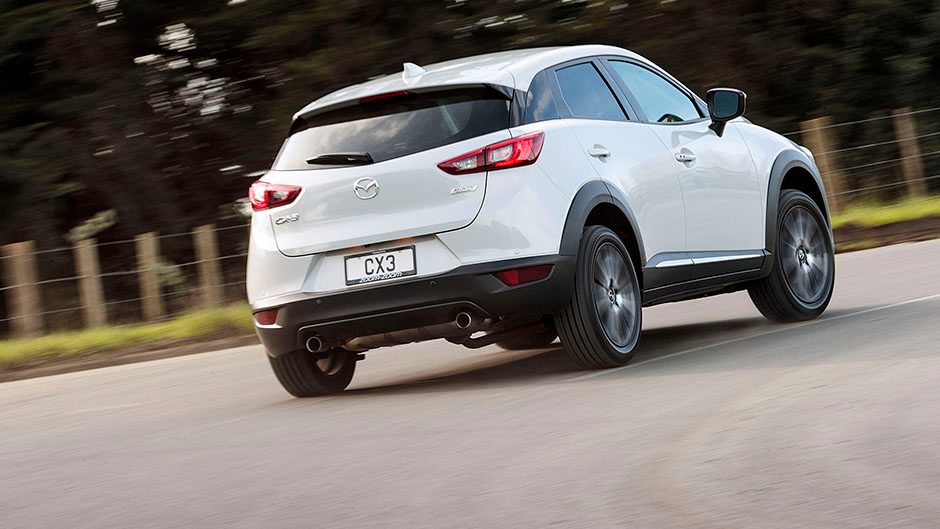
Space and oddities
Subaru generally gets the engineering right, but styling and ergos not always. In driving from Napier to Auckland, do you think I could work out how to cancel the lane departure warning beep? I looked in every submenu, nada. In fact everywhere but the ceiling which is of course where it is. Nutty. Mazda’s ergonomics are beyond reproach.
Anyhow, the XV being the biggest of this trio has the most rear seat space, but not the most luggage capacity, at least with all seats in use. Its 310L with split folding cannot compare with the C-HR’s 377L. Both dwarf the 264L figure of the smaller CX-3. With the rears down, the XV is biggest, at 1250L, the others in the 1100s.
Our winner?
The cheapest wins here, for it’s the most versatile of the bunch. Not only is the XV the only one of the trio to have off-road creds, but it also offers the most cabin space and is the most comfy on the go. If you don’t need to venture off formed roads, and don’t want something quite as big as the XV, the quicker CX-3 then comes into contention. The C-HR in this company seems a tad expensive and a touch off the pace, though some might like the bold styling.
| Model | Mazda CX-3 GSX | Price | $35,295 |
| Engine | 1998cc, IL4, DI, 109kW/192Nm | Drivetrain | 6A, FWD |
| Fuel Use | 6.1L/100km | C02 Output | 146g/km |
| 0-100km/h | 8.90sec | Weight | 1278kg |
| Model | Subaru XV Sport | Price | $34,990 |
| Engine | 1995cc, flat 4, DI, 115kW/196Nm | Drivetrain | CVT, AWD |
| Fuel Use | 7.0L/100km | C02 Output | 159g/km |
| 0-100km/h | 9.83sec | Weight | 1445kg |
| Model | Toyota C-HR | Price | $37,990 |
| Engine | 1197cc, IL4, T/DI, 85kW/185Nm | Drivetrain | CVT, FWD |
| Fuel Use | 6.4L/100km | C02 Output | 136g/km |
| 0-100km/h | 11.51sec | Weight | 1415kg |


